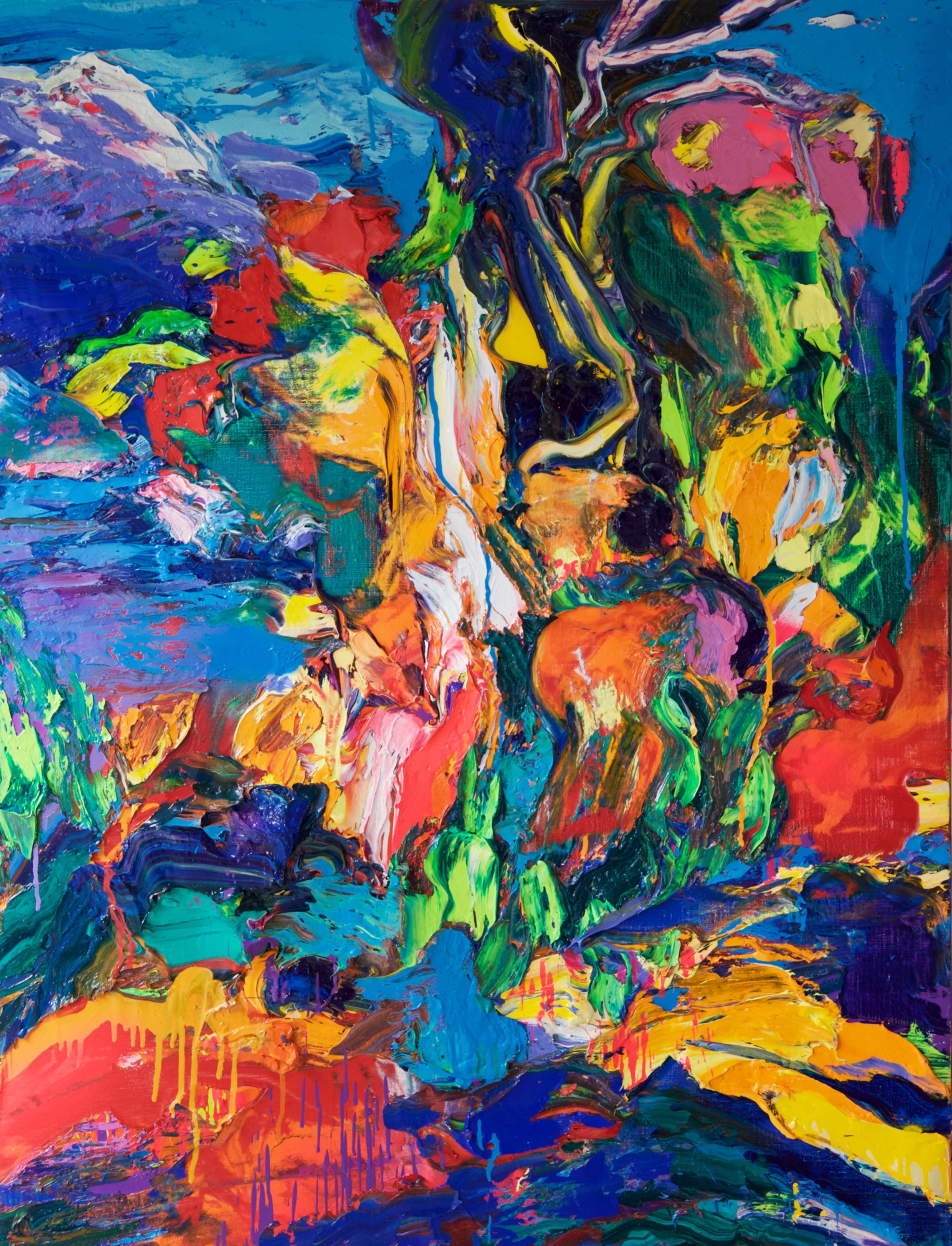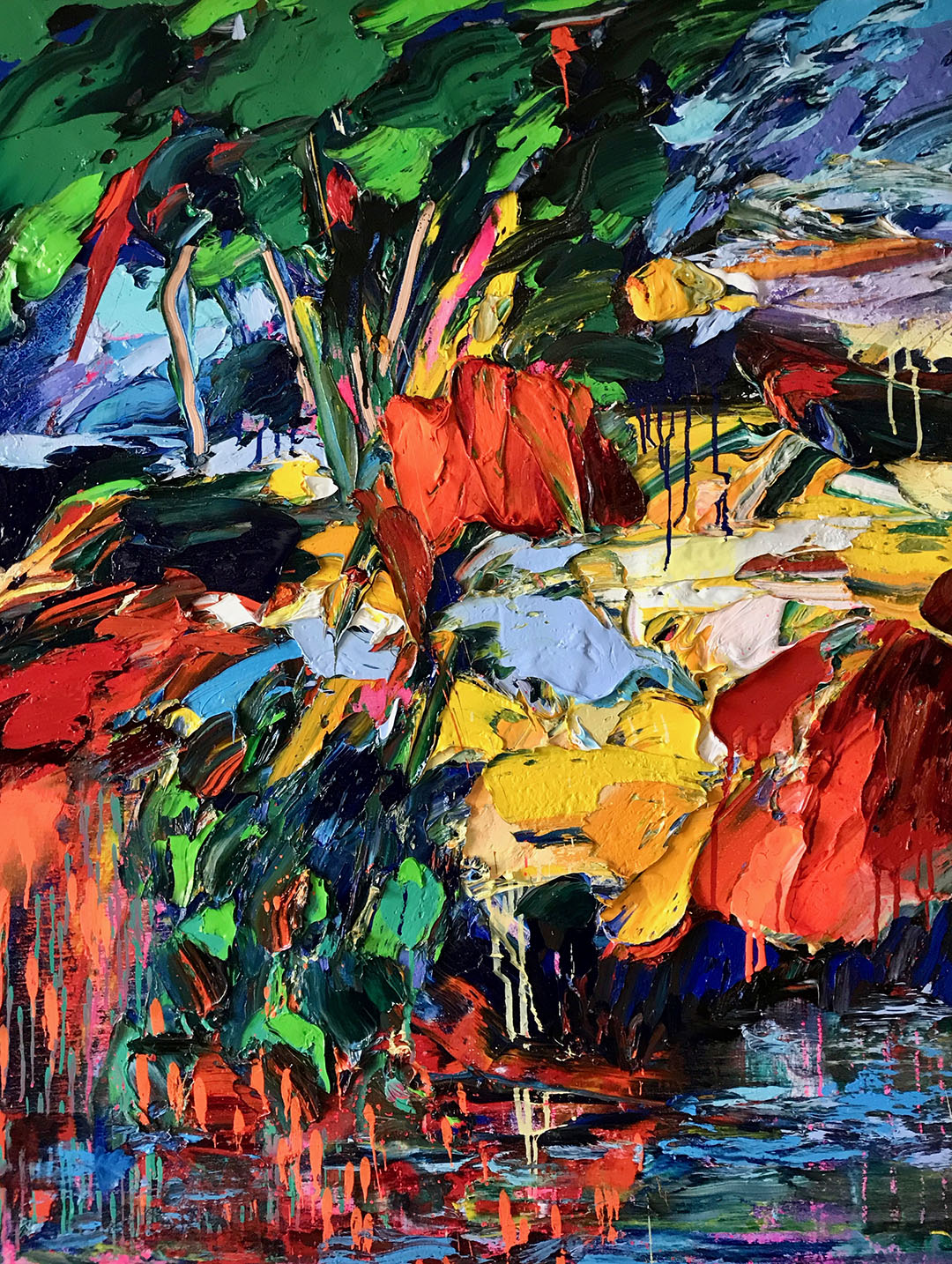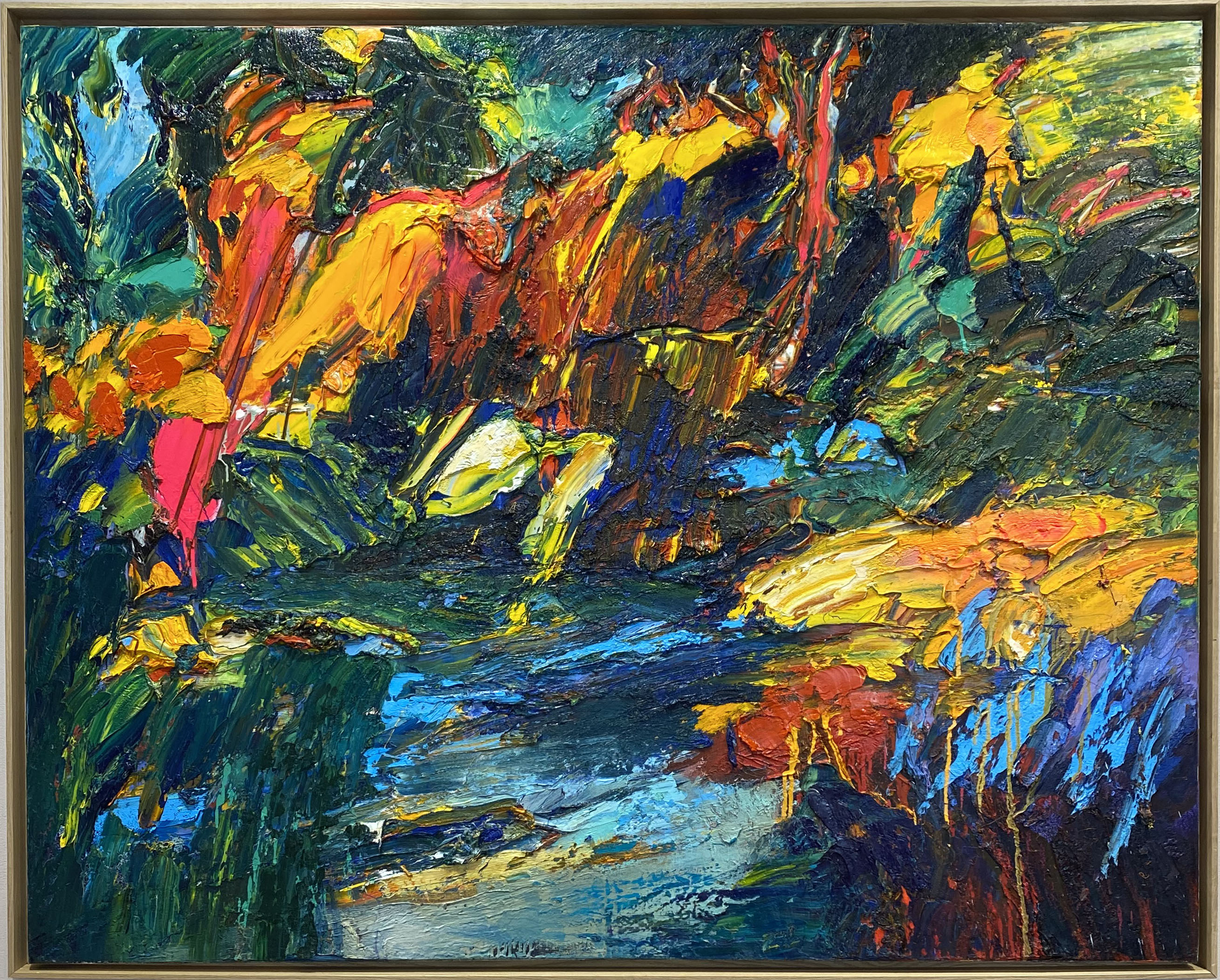Gerard Stricher was born in 1948 to a family of artists in Sarrebourg, France. As a child, he
was already dreaming of becoming a painter and drew prodigiously. Self-taught, he
immersed in the café society of painters, attended gallery openings, and was encouraged by
sales but ultimately decided to enter industry. He became a highly regarded international
manager whose career and travels led him to become a ”World Citizen ”. Widening his horizon,
observing new people, different landscapes, and other realities, which gradually became
stratified in his unconscious to reappear later in his painting. He acquired an old mill in the
French Vexin, established his studio where he worked feverishly.
His exhibition in 2007 in Paris at the Espace Commines introduced him to collectors and
galleries. His American career took off in 2010 with an enthusiastic response at Expo Chicago with Bartlow Gallery. His work is
in many private and corporate collections including, Empire Bank in Springfield, Missouri, and the Pepsi-Cola Foundation of New York.
Gérard Stricher: nature quivering
“In his new period, Gérard Stricher presents an approach to painting as exhilarating as ever, in a vein reminiscent of William Turner and his Impressionist panoramas. Like those of the inventor of the modern landscape, it is not the description of places that interests him: Stricher gives an account of nature’s spectacles as dramatic, grandiose and often terrifying, working in the aesthetic category of the “sublime” – which Turner would not disavow – and which Edmund Burke theorised in these terms: “Whatever is fitted in any sort to excite the ideas of pain, and danger, that is to say, whatever is in any sort terrible, or is conversant about terrible objects, or operates in a manner analogous to terror, is a source of the sublime; that is, it is productive of the strongest emotion which the mind is capable of .”
This form of the sublime hinges on sensations and images that create a potent physical tension, an Expressionism that is wonderfully illustrated in Stricher’s vast landscapes. With a different palette from that of his illustrious predecessor, marked by the use of raw and pure tones, we find raging waves, swirls of foam, black and jagged skies, livid moonlight, dizzying mountains, titanic avalanches and storms on a cosmic scale. But the painter’s real conquest is the one nature grants him through his brush: a conquest over light, over air, over wind.
The intangible elements seem palpable, as if the artist and nature had established a relationship of trust and friendship. Paintings like The Lovers’ Wood, Autumn Dawn, The World To Come, Pathway to the Stars and The Garden of Springs seem to methodically destroy all traditional principles of composition, plunging the viewer into an all-embracing instability. Broad brushstrokes and warm tones opacify the surface and impart a circular movement to the painting. In the midst of a terrifying maelstrom, one can no longer distinguish sky from earth, nature from air, a pond from a flower. Only recourse to different bursts of colour succeeds in creating nuance.
The artist is no longer facing his material, he is in it. His desire is to capture not so much the atmosphere that envelops things as the primal atmosphere that binds them together. It is as if he were not setting up his easel facing the world, but in the world! He gives ample space to his great splashes of colour, to the very plasticity of the paint, unfolding its polychrome texture with a heightened spontaneity vivifying the creation of a new imaginative space. With this series, begun during the March 2020 lockdown, the painter has set aside his anthropomorphic figures, immersing his entire being in the simple aspect of nature and bringing all the universe’s songs and wonders vibrantly to life on the canvas. Deprived like everyone else of freedom, “under house arrest” because of the pandemic, Gérard Stricher felt deep down “The Call of the Wild”, an exacerbated need for freedom, a mad desire to be outside, outside… Thus did he shape this new Dionysian parade in which his personal palette develops, that palette of colours straight out of the tube which remains his immediately recognisable painterly signature.
In this innovative approach to nature in its nascent state, water – the liquid state – seems to be a primordial element. The artist likes to recall a childhood on riverbanks, marked by endless fishing trips. This atmosphere of awakening, of dawning luminosity, of embryonic purity, of innocence, of lightness like a liberation from all bondage, from all heaviness, this lively race, this flight, all remind us of Arthur Rimbaud’s “unspeakable hour”, the premise of the birth of a world, the genesis of new days, the desire to “embrace the summer dawn”. Contemplation and the search for the expression of this feverish exaltation are prolonged as carnal desire, all senses alert, in a kind of mystical ambition that sheds confusion and emerges in art. The painter, like the poet, generates a new life and seeks to plunge us into a wild state, a Rousseauist emotion. Confronting these works, as in the case of “the poet with soles of wind”, we can laugh “at the blond wasserfall dishevelling among the fir trees.”
Gérard Stricher finds this “Paradise Lost” in the fertile exaltation of painting, in Song of Joy, in the tonality of Matisse’s pure colours wonderfully wedded to the sanguine spirit of Beethoven’s compositions, counterpoints and harmonies. With Dance of the Shadows, The Gates of Light, Fury of Heaven and Echo of my Childhood the painter, through a bewitching extension of colour, a mixture of meditation and contemplation, touches on an almost immobile dynamic. As in the first morning of the world, he deploys a softness, a kind of tender warmth, in absolute transparency.
Over each work he scatters a thousand impulses, caressing, dramatic – violent, even – and ultimately calming. He models vast fields of colour with the same sensitivity to balance and brilliance, to light and dark, with that creamy touch, that “subtle impasto” so characteristic of his Expressionist approach. The image is enclosed in a relief of thick pigment, surfacing in some places, then in others sinking back into its matrix. The effect of suddenness, of an instantaneous outburst from which all the artist’s images draw their strength, occurs in a moment of grace, as if spontaneously. It is, however, prepared by months of efforts and wanderings, of constructions and destructions. Passionate and instinctive, this dislocation of appearances gives rise to an acutely sensitive painterliness, and this substance-painting made of rich and swirling impasto weaves the works together and challenges us. The landscape is then self-sufficient, seeking no justification for a scene of which it would be the setting; we exit time for space, text for image.”
— Renaud Faroux, art historian. Paris, March 2021
To order any of Stricher’s work, please complete the form below stating Gerard Stricher‘s name in the message area, and I will contact you as soon as possible. Or call Judy Ferrara directly at 1-574-276-6001.
For more information please fill out the form below:





